When you are on a mission to cram as much as possible into a day in Budapest, it’s tempting to skip Matthias Church on the Buda side of the River Danube. This is a mistake.
I’ve lost count of the number of churches I’ve visited across Europe and this is one of the most unique. It’s not enough to simply admire it from the outside.
Ready to find out more? In this article, I share why this is such an important cultural and historical site, what to expect when you visit and how to do it.

The church is dedicated to the Virgin Mary
Although its official name is the Church of the Assumption of the Buda Castle or the Church of Our Lady, it is more commonly known as Matthias Church (Mátyás templom). This is after the wildly popular King Matthias Corvinus the Fair, who remodelled and expanded the building in the Gothic style in the 15th Century.
It is also known as the Coronation Church of Buda.
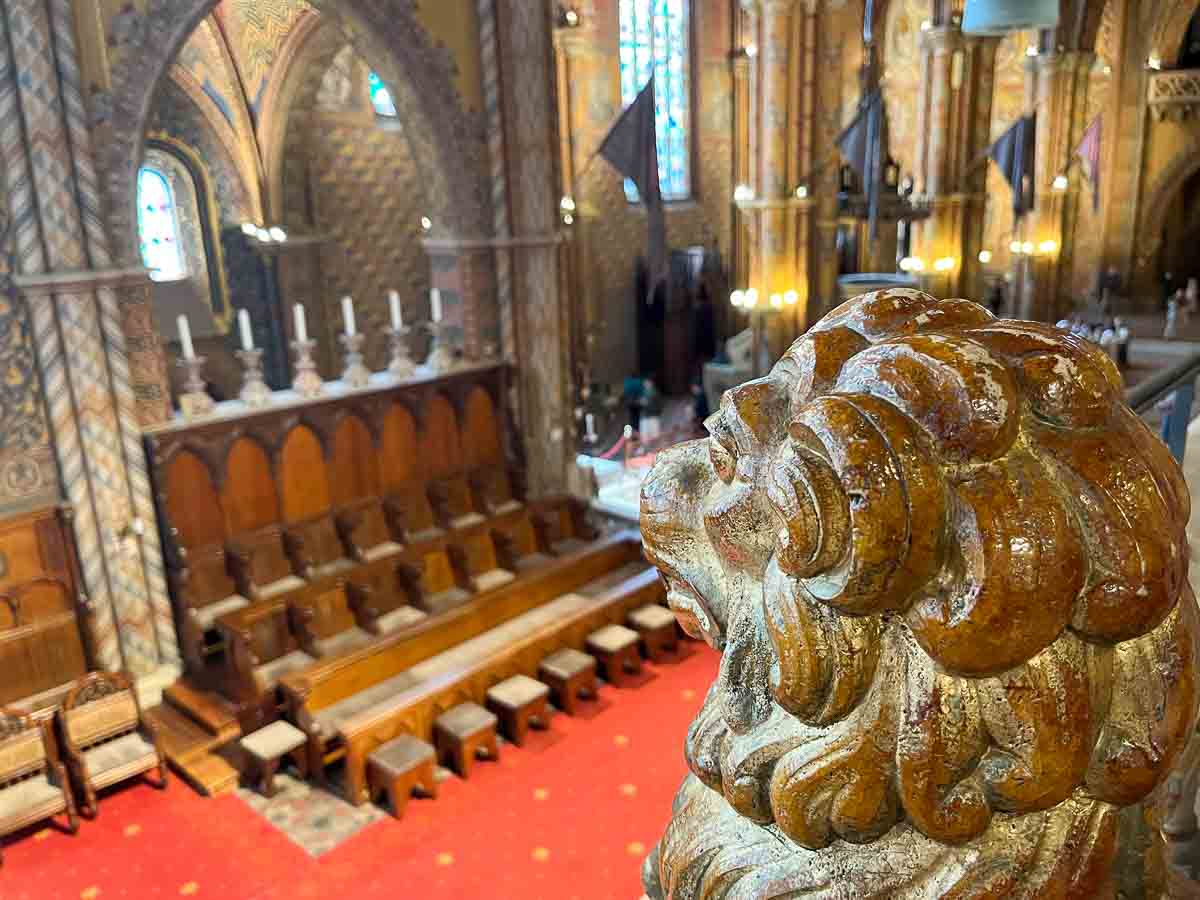
Matthias Church’s long history stretches back to the 11th Century
According to historians, a Romanesque church was founded by Saint Stephen, King of Hungary on this site in 1015. This is the equestrian statue of him between Matthias Church and Fishermen’s Bastion.
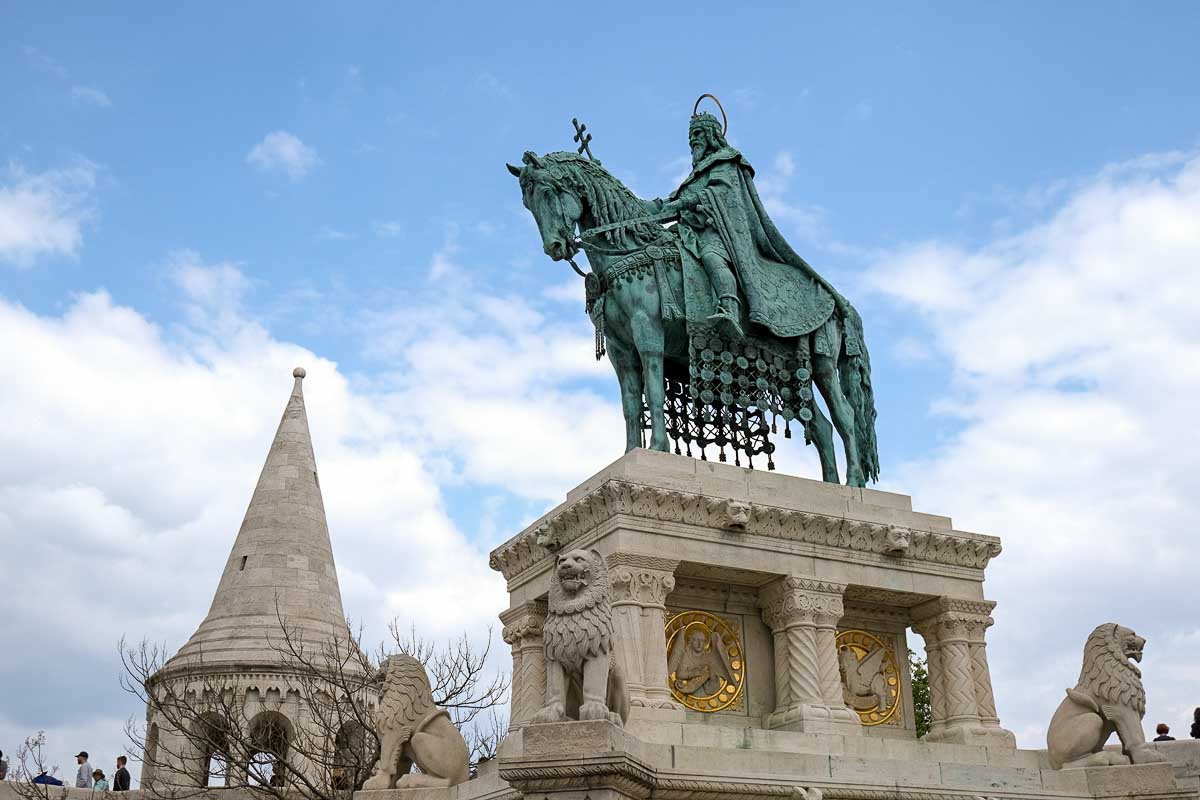
After the destruction of this building by the Mongols, the current church was constructed in the late 13th Century.
The Ottomans destroyed most of Buda’s churches during their occupation in the 16th Century. They spared Matthias Church but stripped it bare and turned it into a mosque.
Conversion of churches into mosques was common during Islamic conquests in Europe. Other famous examples include the Mosque-Cathedral of Córdoba, Spain.
After the Turks were kicked out in 1686, the building was reconsecrated as a church and given a Baroque makeover. But much of what we see today is the result of a major renovation between 1895 and 1903 by the architect Frigyes Schulek who was also responsible for the Fishermen’s Bastion.
The exterior of the Matthias Church in Budapest is wildly asymmetrical
Take a few minutes to walk around the outside of the church before you enter.
It’s a profusion of towers with toothy spires. The one with the multicoloured roof tiles is the Béla Tower. Matthias Tower is the taller one.
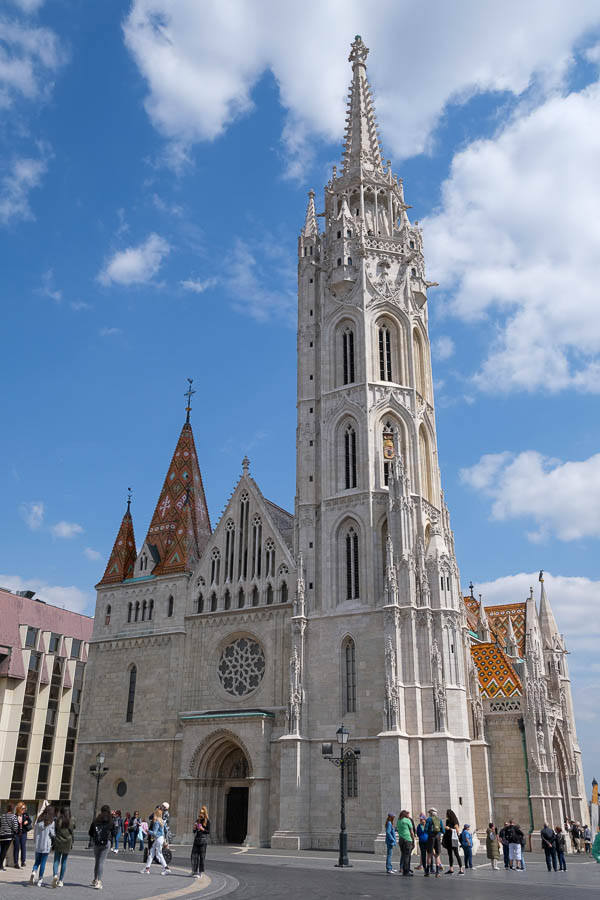
Beautiful hexagonal patterns of coloured tiles made in the Zsolnay porcelain factory cover the church’s roof.
When you’re ready, enter the church through the Mary Portal, which is decorated with a Gothic relief.
Inside Matthias Church Budapest
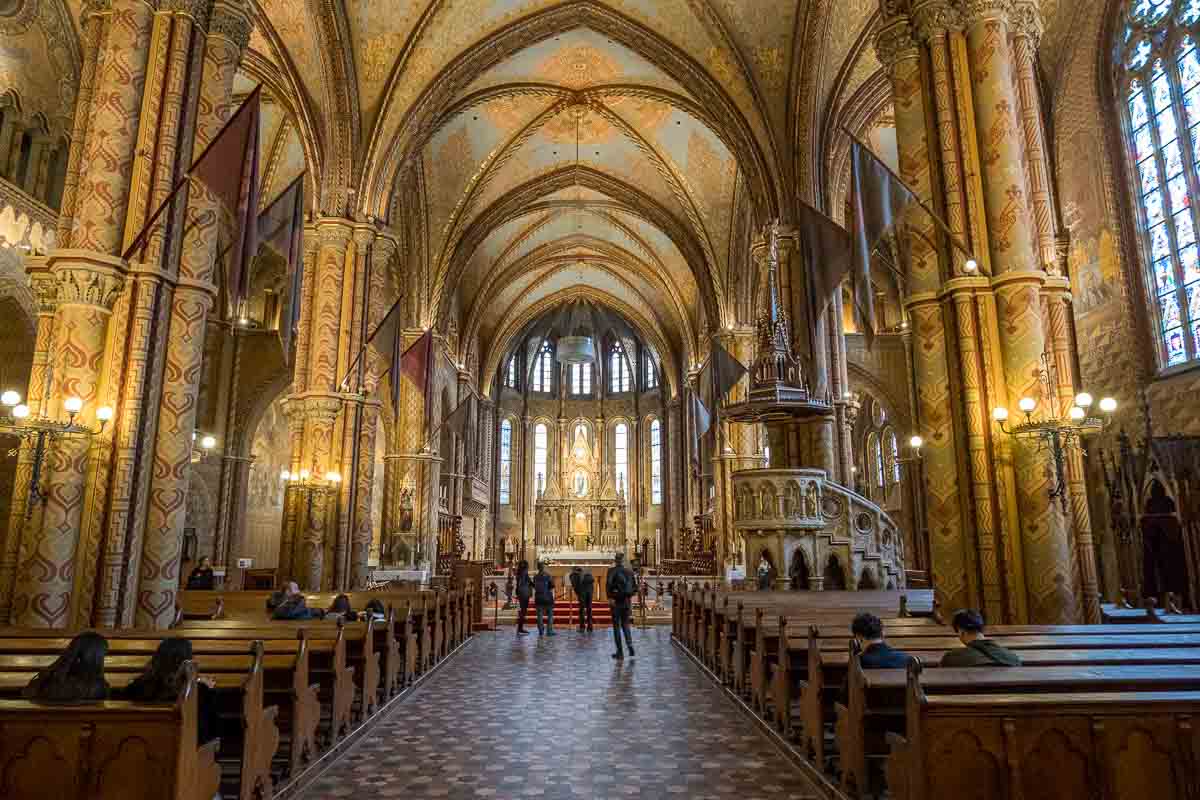
The richness of the interior of Matthias Church is almost overwhelming. Polychromic columns are adorned with painted leaves and geometric motifs. Shafts of light through its rose windows shine spotlights on its gilded altars and stone sculptures.
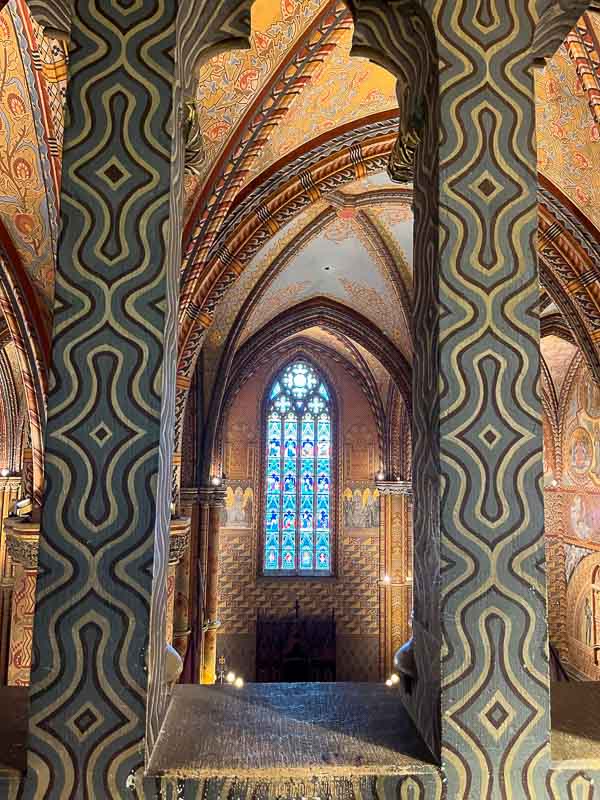
As you enter the church, there’s a frescoed wall, the Shield of Matthias, painted in 1470 when King Matthias was remodelling the church. This coat of arms was relocated from the external wall of the church in the 19th Century.
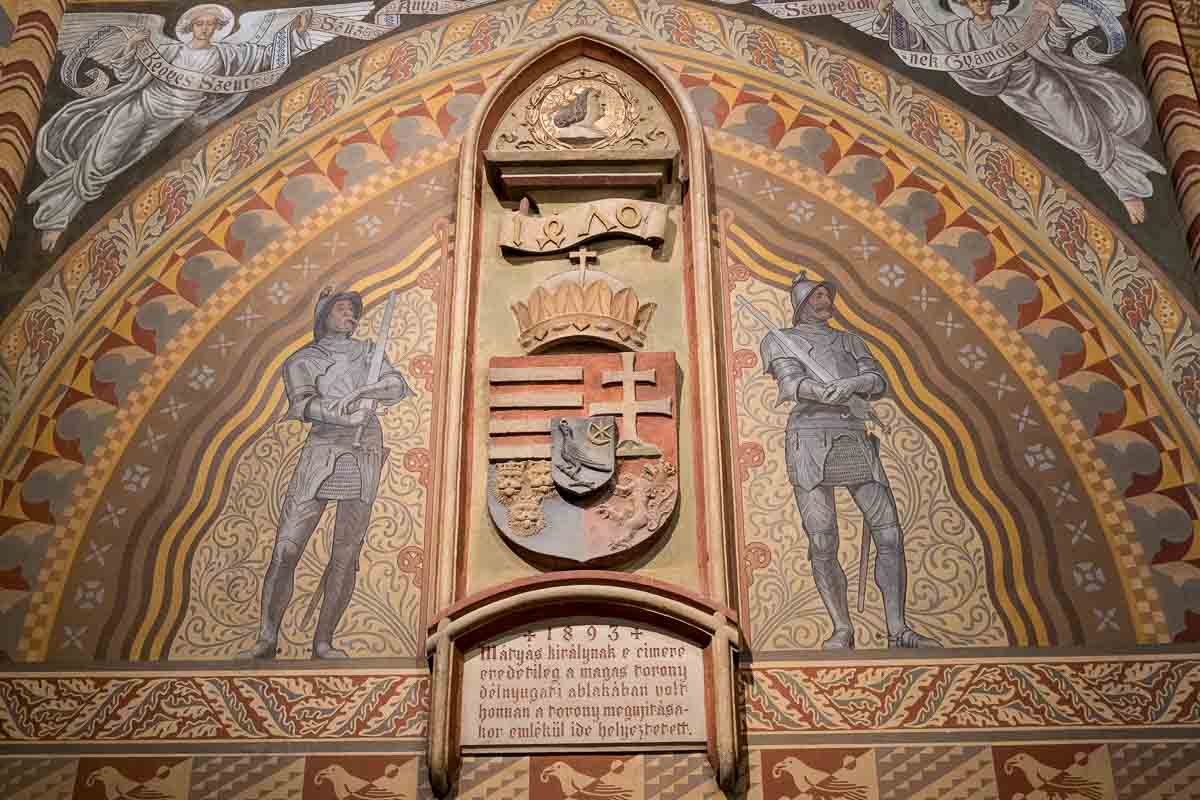
The murals around the coat of arms were painted by Bertalan Székely, one of the most celebrated Hungarian painters of the 19th Century. Together with Károly Lotz, he was responsible for most of the church’s gorgeous frescoes.
Don’t miss the stone carving at the base of the capital of the Béla Tower which depicts two figures pointing at a book. Dating from 1260, this is the oldest piece of stonework in Budapest and is still in its original place.

A second medieval capital is carved with fighting monsters.
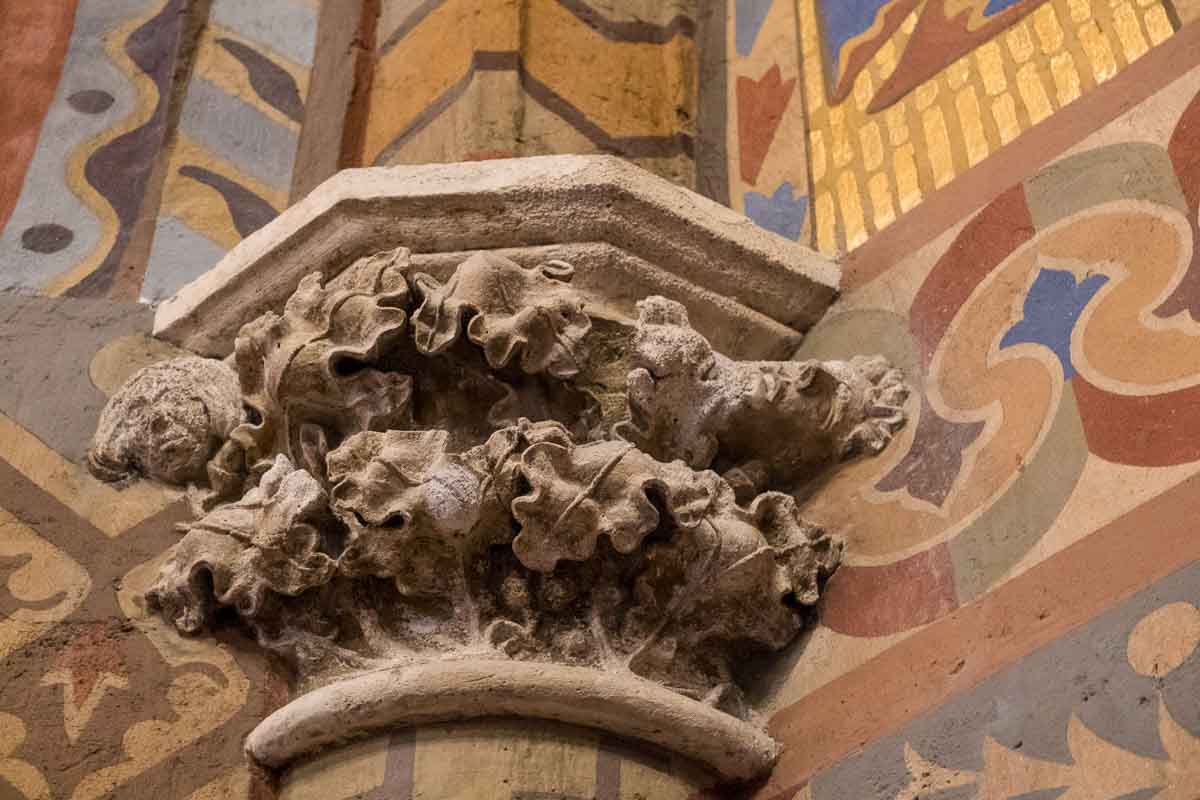
Nearby, the Loreto Chapel houses a Baroque Madonna. I loved the nearby Lamb of God Window above the baptismal font.

King Béla III and his wife Anne de Chátillon have been laid to rest in a tomb in one of the church’s north chapels. Frigyes Schulek drew up the plans for the sarcophagus and tomb, and Ferenc Mikula carved the sculptural elements.
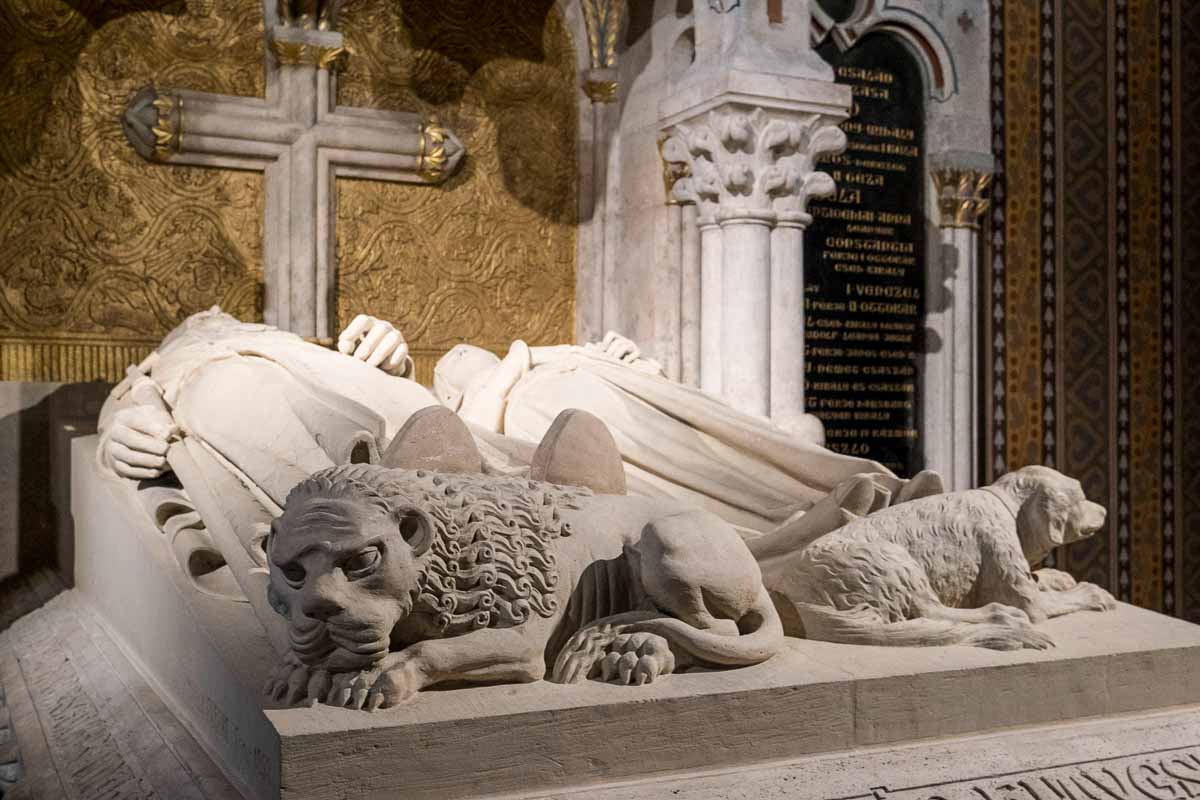
Schulek and Mikula were also responsible for the church’s wonderful pulpit. Built from sandstone between 1890 and 1893, it is covered with ornamental paintings including the statues.
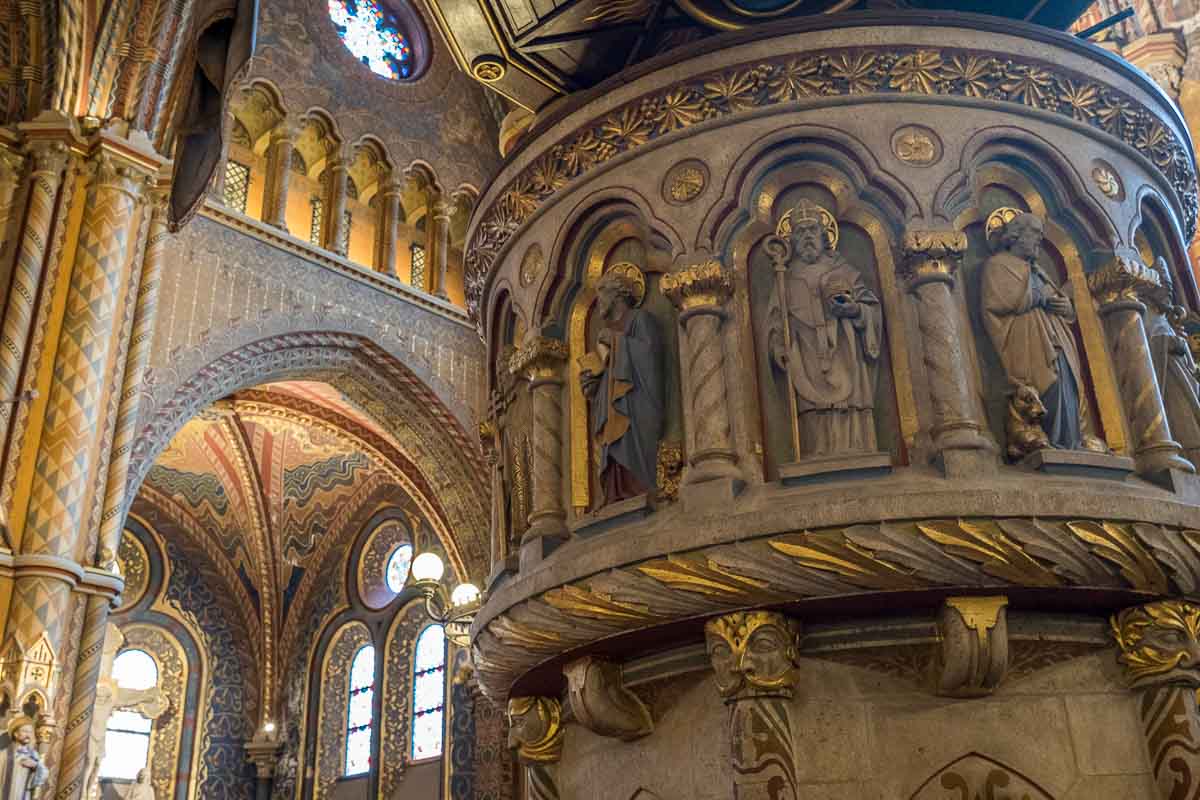
The painted statues in the Saint Emeric Chapel depict King Saint Stephen, Saint Emeric of Hungary and Saint Gerard, Bishop of Csanád.

It’s well worth taking the stairs to the first floor for a superb view of the gilded main altar, which is topped by the coronated Virgin Mary.
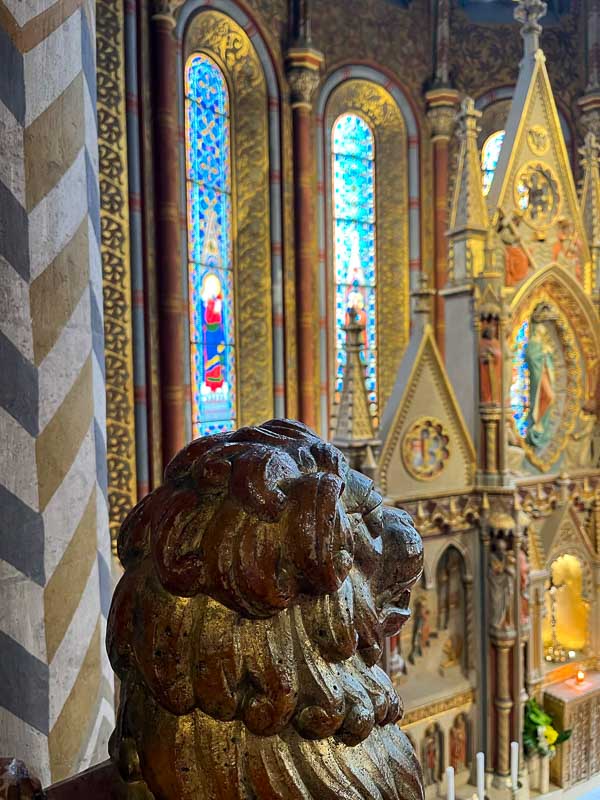
The huge windows on the southern wall of the upper floor depict the Virgin Mary and two important female saints: Saint Elisabeth and Saint Margaret.
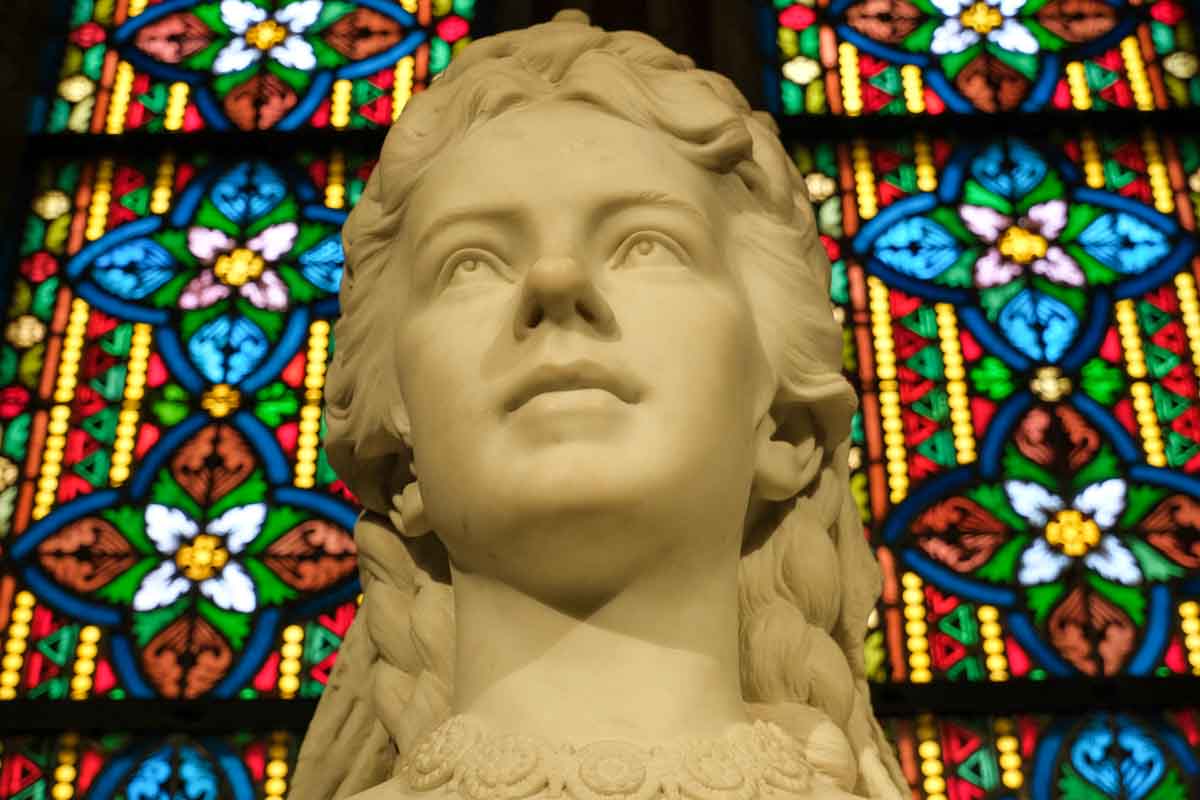
Matthias Church has an excellent collection of ecclesiastical treasures in its gallery. I was taken with the communion wafer iron and wafer cutters.
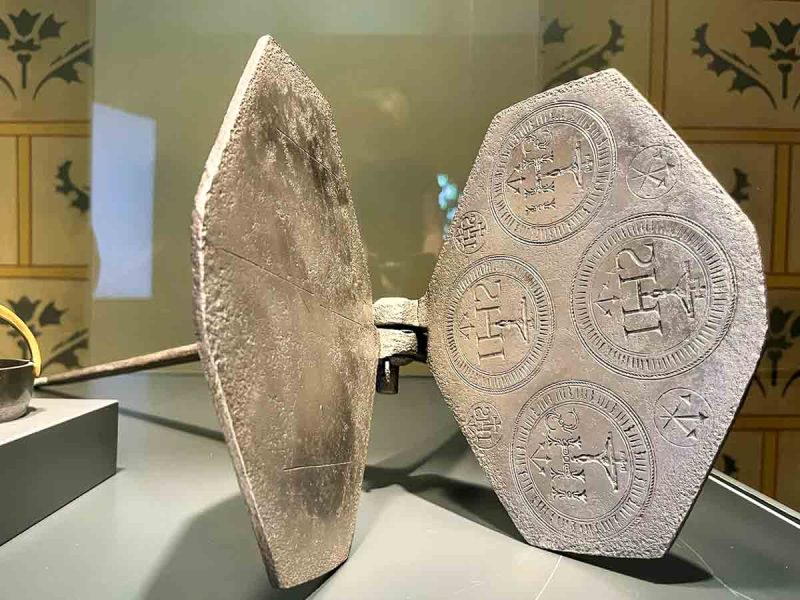
Visiting Matthias Church Budapest
GETTING THERE: Matthias Church is located in Holy Trinity Square (Szentháromság tér) in the historic heart of Buda.
Although you can walk here up the Király lépsco (Royal Steps), a less lung-busting way is to take the funicular railway. This sets off from Clark Ádám tér next to the Széchnyi Chain Bridge. From the upper station, it’s a 10-minute walk to the church.
Bus no.16 from Deák Ferenc Square on the Pest side of the river will drop you off at Holy Trinity Square
OPENING HOURS: Matthias Church is open 9 am – 5 pm from Monday to Friday; Saturday: 9 am – 12 pm and Sunday: 1 pm – 5 pm. You can check the opening hours here.
You need to buy a ticket to visit Matthias Church.
For an additional fee, you can climb 197 steps up the church tower to the panoramic terrace. The tower ticket includes a 10-minute guided tour.
And That’s a Wrap!
I hope this article persuades you to add Matthias Church to your list of places to visit in Budapest. It is 100% worth the entrance fee.
I visited Budapest as a solo traveller on an Interrail trip through Central and Eastern Europe. If you have found this guide useful and need help with planning where to go next, take a look at some of my other guides:
AUSTRIA: Explore the Salzburg of Mozart and find out why you should book a Christmas break in Vienna. Discover Feldkirch, one of Austria’s hidden gems, and use it as a base to take a day trip to Liechtenstein, visiting Vaduz.
CZECHIA (CZECH REPUBLIC): Discover what to do in Brno. If wine tasting is your thing, do a DIY tour of the best vineyards near Brno.
SLOVAKIA: Spend a day in Bratislava. Visit the highlights of Košice, Slovakia’s second city, and take a day trip to Bardejov, a UNESCO gem.
Happy travels!

About Bridget
Bridget Coleman has been a passionate traveller for more than 30 years. She has visited 70+ countries, most as a solo traveller.
Articles on this site reflect her first-hand experiences.
To get in touch, email her at hello@theflashpacker.net or follow her on social media.
